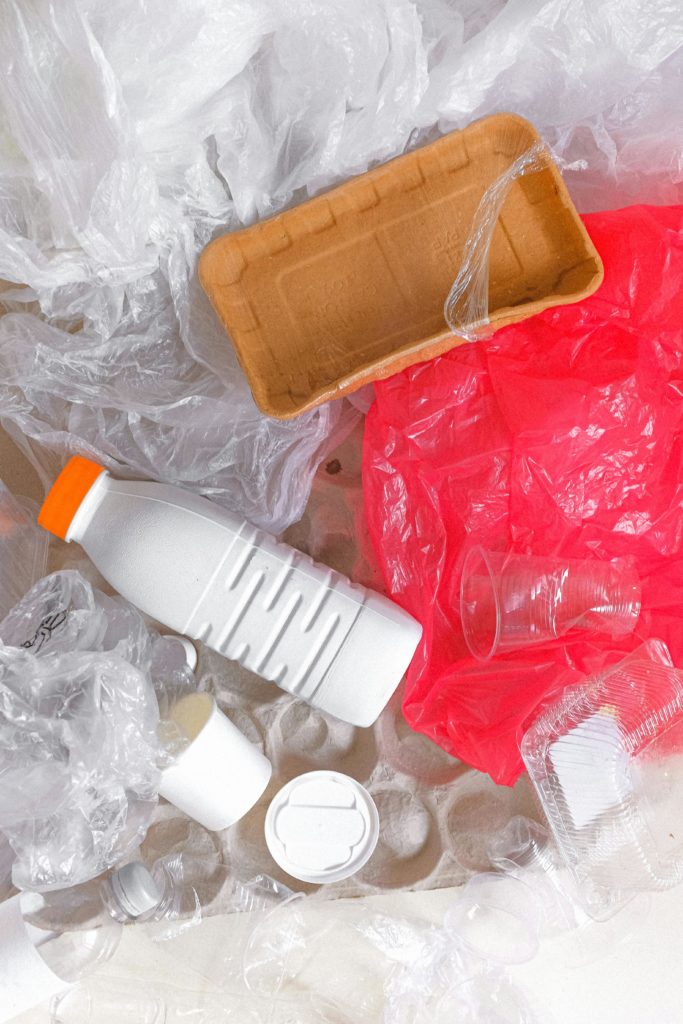
Plastic has become an inseparable part of our everyday living. It’s hard not to use plastic; it’s essentially everywhere. From food containers and appliances, to furniture and our clothes. Plastic can leach from our environment to enter our bodies in the form of microplastics and often contains chemical compounds that can be harmful to our health. A lot of health conditions including reproductive issues, lung disease, tissue damage, weight gain and asthma have been found to be linked to the use of plastic. Microplastics may also cause blood clots that can be deadly to the heart and brain.
In recent studies, NMP (Nano- and Microplastics Particles) were found in human bloodstreams and lungs. Human exposure to these particles through inhalation and ingestion has raised concerns about their potential adverse health effects and has led to calls for monitoring the environment and food for plastic pollution.
Coffee Cups

Takeaway paper cups are lined with a polymer (plastic) lining to make them waterproof. You may think that eco-friendly coffee cups are free from plastic, but they are still coated with a layer of plastic. Using plastic-lined containers with hot food like coffee and tea, exposes these materials to high temperatures making it easier for microplastics to leach into our food and beverages. Ceramic mugs are generally free from plastics and harmful chemicals. They can be found in the kitchen in most offices, but if not, investing in a mug to keep in the office pays off for your health by keeping you away from the harmful components found in plastic-lined or Styrofoam cups.
Tea Bags
There are tea bags made from nylon and PET, which means that they contain plastic. Researchers at McGill University tested four popular brands of tea sold at grocery stores and found that a single plastic tea bag can release 11.6 billion microplastic and 3.1 billion nanoplastic particles into the water.
You may think that paper tea bags are free from plastic, but an unsettling substance called epichlorohydrin is used even in paper tea bags to keep them from bursting. Epichlorohydrin is an industrial solvent used to manufacture glycerol, plastics, epoxy glues and resin.
To avoid being exposed to plastic found in tea bags, basket tea infusers made out of stainless steel would be a good option. Not only they are reusable and reduce waste and harm to the environment, they are also free from plastics. The other option is to use a teapot to steep your tea.
Alternatively, you can choose plastic free tea brands listed in guides published online.
Coffee Pods
The bulk of the coffee pods sold on the market are manufactured using plastic. It becomes a concern to our health, mainly because hot water passes through the top part that gets punctured by the coffee machine. More and more employers are abandoning coffee pods, sometimes for other reasons such as waste reduction and environmental impact.
If your employer is still using coffee pods, raise your concern with your office services and suggest that they switch to traditional drip coffee makers. Brewing your coffee at home with your own coffee machine would be a good alternative if your suggestions don’t go anywhere. You can even invest in a French press that you can leave in the office – That depend on if the taste of a French press made coffee appeals to you.
Airborne Plastics
Plastics are not only found in our food containers, tea bags and coffee pods. They’re also in the air we breathe. You don’t have to work in a plastic-processing facility to be exposed to Nano- and Microplastic particles (NMP). NMP can be found in the degradation of carpets and furniture within offices. These particles can become airborne and consequently lead to inhalation.
The greatest solution may be to open up the windows and get a good breeze come in from outside. However, this might not be a possibility around the office. Vacuuming regularly will also help, because the microplastics in the air will eventually settle into dust on the floor. Reach out to your office services and ask what their vacuuming schedule is. Vacuuming only once a month may leave a larger reservoir of particles on the floor that can re-suspend every time people walk around the office.
At this point, the threat of exposure to microplastics is known and can be measured. However, there are no regulations in place to control employees’ exposure to microplastics. In the meantime, you can be proactive and ask your employer to add appropriate controls at the workplace such as:
- Exhaust ventilation
- Good industrial hygiene
- Use of low emitting carpets and furniture
- Swapping pod coffee machines for a regular drip coffee machine